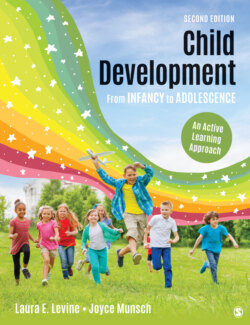Читать книгу Child Development From Infancy to Adolescence - Laura E. Levine - Страница 124
На сайте Литреса книга снята с продажи.
Modern Applications of Evolutionary Theory
ОглавлениеIdeas taken from evolutionary theory and ethology have influenced research on several important topics in the field of child development and contributed to a newer approach known as evolutionary developmental psychology, which applies the principles and ideas of evolutionary theory specifically to questions of how and why children develop as they do (Causey, Gardiner, & Bjorklund, 2008; Frankenhuis, Panchanathan, & Nettle, 2016). Children’s behaviors (such as aggression, altruism, and attachment) are seen as adaptations to the environment in two ways: (1) they help prepare them for adult life, and (2) they are adaptive at their own stage of development and in their specific life circumstances.
One example of research based on an evolutionary developmental approach has focused on the onset of puberty in girls, which is affected by many factors but is largely controlled by genes. Research has shown that girls enter puberty at earlier ages when their parents have a high level of conflict with little support or satisfaction in their marriage, when their father is absent or severely dysfunctional, or when they have an insecure relationship with their mother at age 15 months (Belsky, Houts, & Fearon, 2010; Webster, Graber, Gesselman, Crosier, & Schember, 2014). Evolutionary developmental psychologists point to the fact that a girl with a dysfunctional childhood may not be able to count on reaching adulthood successfully; therefore, an early puberty may be adaptive because it helps ensure that she will be able to pass on her genes by enabling her to get pregnant earlier in life.
